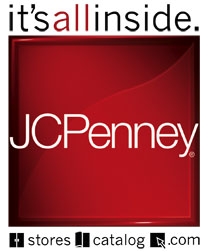
The Good News and The Bad News…From Bentonville
It’s the holiday selling season and there’s a lot of news in retail, especially from the center of the retail world in Arkansas. While there are many other stores to talk about, let’s take a look at two stories worth considering.
First the good news. Thanksgiving has come and gone and by now the 40 pounds of newsprint that landed in my driveway has made its way to the recycle bin. Of all the ads and inserts in my paper, I couldn’t help but read one from cover to cover. It had the best photography, the right gift items, and probably the best prices. No it wasn’t Target (as good as their ads always are). Penney’s spent a lot, but looked like everyone else. Nordstrom, Macy’s and Dillards looked like—well, like department stores. The best of the batch, in my opinion, was a slick-looking 16-page standard insert from none other than Sam’s Club. Great photography, heavy, quality stock, terrific items, subtle prices with not so subtle savings. Made me want to read every bit of copy and check every price. While you could argue was this vehicle incongruous with a warehouse club store, you couldn’t argue with the creativity and the savings. Of course, Costco, as always, didn’t run any advertising, but Sam’s set the pace with this circular and I suspect resulted in far better performance than their parent discount chain.
Which brings me to the bad news (unless you’re Target or Kmart). First, as a consumer, I didn’t feel the presence of Wal-Mart at all during the Thanksgiving week. I saw more of the spots from the union trying to break down the conditions of working for the world’s largest retailer than I did from the store. Usually, a dominant player, I didn’t even see a Wal-Mart preprint and the television was transparent. Maybe the new marketing gurus from Chrysler and Frito-Lay had them running ads in Real Simple or Field and Stream magazinea. The lack of any presence by the largest retailer makes you wonder what’s happening in Bentonville. Obviously, from the sales results, consumers felt the same way.
To me it’s another example of this store trying to act like a packaged goods or automotive marketer and forgetting the sense of urgency that retail demands. The fact that they took their eye off the ball to conduct an 8-month agency review (who needed that anyway??), then selected one that really has no retail experience, then fired the key marketing exec from Chrysler and her assistant and then unbelievably started the agency review all over again. Something stinks here. Now they are going to waste another 8 months and countless marketing energy by renewing the search (oh, to be an agency search consultant!) I went into a Wal-Mart this weekend and I think they were as well merchandised as ever. The big difference was that there were no lines at the registers and that really worries me. How blind can they be to their problems? The great brand is in jeopardy.
We will have to see how the Holidays finish for sales, but I hope the news at your company and home is all good . Happy Holidays...








